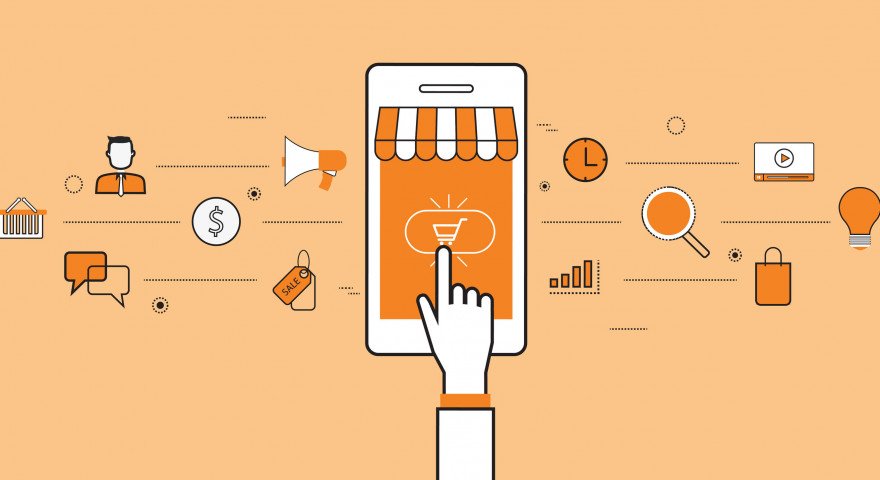In the current situation brought about by Covid-19, online businesses are becoming more and more popular as people are now preferring to shop online. Hence, more businesses are trying to make their products available through an eCommerce store. Shopify is the trusted and leading platform used by over one million businesses across 175 different countries. Shopify is popular because it helps business owners manage several aspects of an eCommerce store without any web development knowledge.
In case you’re planning to start a Shopify store, there are a few things you need to keep in mind to make sure that your store runs efficiently. Then without further ado, let’s get started.
1. Avoid Free Domains
Shopify offers a free custom domain. However, it may not be the best choice for you as it is a subdomain that does not rank well in search engines. Besides, using a subdomain is not the ideal way to create awareness for your brand. In the first place, you shouldn’t wait for your store to grow before you purchase a domain. A domain name does not cost a lot and it will surely help in building your brand. In addition, buying a domain will benefit your business from an SEO perspective.
2. Provide a Mobile-Friendly Design
With Shopify, web design is quite simple. It is all a matter of dragging and dropping elements to assist in setting up your website. However, the most important factor is creating a mobile version of the website i.e., responsive web design. For a mobile-friendly design, ensure that:
- the header is fixed.
- the call-to-action buttons are large enough.
- images are clear and of high-quality.
- text is at a minimum.
- pop-ups are reduced as they tend to be distracting.
- the design is optimized for various screen ratios.
3. Make Your Store SEO-Friendly
When you have a Shopify store, you have to ensure that the store performs and ranks well on various search engines. To do so, you should have several keywords strategically placed in different locations of your website. So even before opening your store, you need to get some keyword research done first. Once you are aware of the relevant keywords, you can then use them not just to optimize your worded content, but the images and other media as well.
4. Use High-Quality Photos
When users come to your website in search of products, they will likely look at the images first. Thus, images should always be clear and of high-quality. However, high quality doesn’t necessarily mean high-resolution. Sure, resolution does contribute greatly to image quality. But in web design where large files may affect the loading time of your website, some balance needs to be found. In this case, high-quality images are those that are sharp and relevant to the content on that specific page.
Furthermore, high-quality images attract the attention of your viewers while building trust as they are able to clearly see everything you have to offer. Hazy and skewed photos, on the other hand, will only create confusion and doubt in the mind of the users and will not help your business. In the long run, high-quality images provide a big boost in increasing user engagement and decreasing your bounce rate so that you get higher leads conversion on your website.
5. Offer Several Payment Options
In any business, you won’t know which payment method each individual customer prefers. So instead of making your customers move heaven and earth to conform to your preferred method, provide them with a number of payment options for their convenience. You should consider wire transfer, credit or debit cards, PayPal, and any other popular means. This way, you don’t have to worry about driving customers away because you don’t offer the payment modes available to them.
6. Update Your Product Inventory Regularly
When starting an online store, it will be tempting to add your entire product line all at once, but you might want to rethink it. It’s good practice to add at most 25 products on the first day. Focus on smaller batches and update your inventory weekly. But do note that this count will depend on the number of products you have available.
Regular updating is also necessary for SEO. If all of your content is posted on a single day, leaving no activity on your site for the next few months, your website and your business may not grow. Remember to update your website regularly because it is the only way to get organic traffic. To help you with this, set a schedule for when to add products to your inventory and when to manage them.
7. Promote Your Store on Social Media Channels
When starting a new eCommerce store, remember to promote it well on social media. In the process of designing the store, ensure that you have all the necessary social icons present on the website. This allows your customers to have the full scope of sharing your products online. Social media advertising is one of the easiest, and certainly the most popular way of building a target market, especially when you are just starting out.
Conclusion
Now that you know what it takes to succeed in the eCommerce world, you have to work hard on your store and be sincere with all your efforts. Managing a business whether online or not doesn’t work like magic. It is your consistent efforts that will give your site higher rankings in search engines, and in turn, slowly increase your sales. All you need is to be patient!


